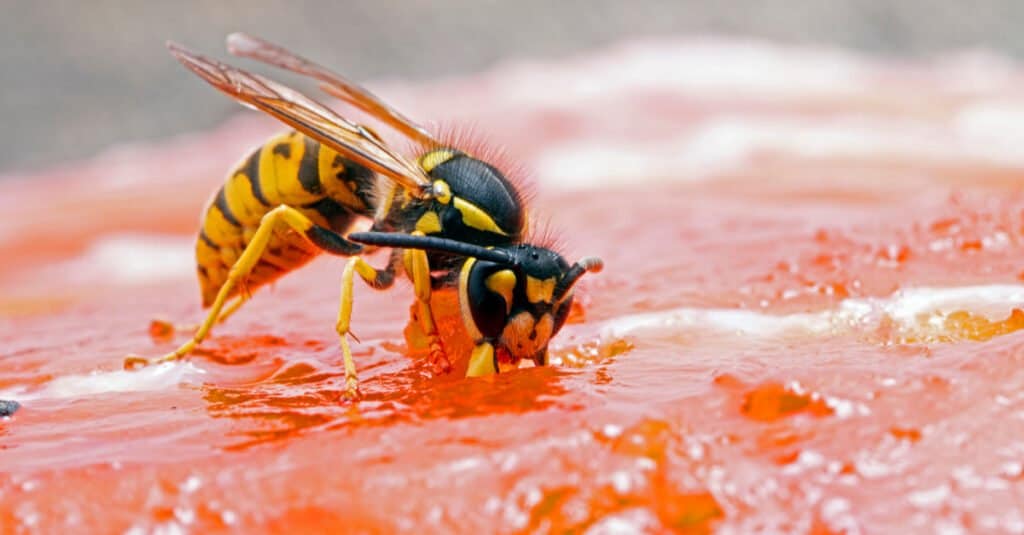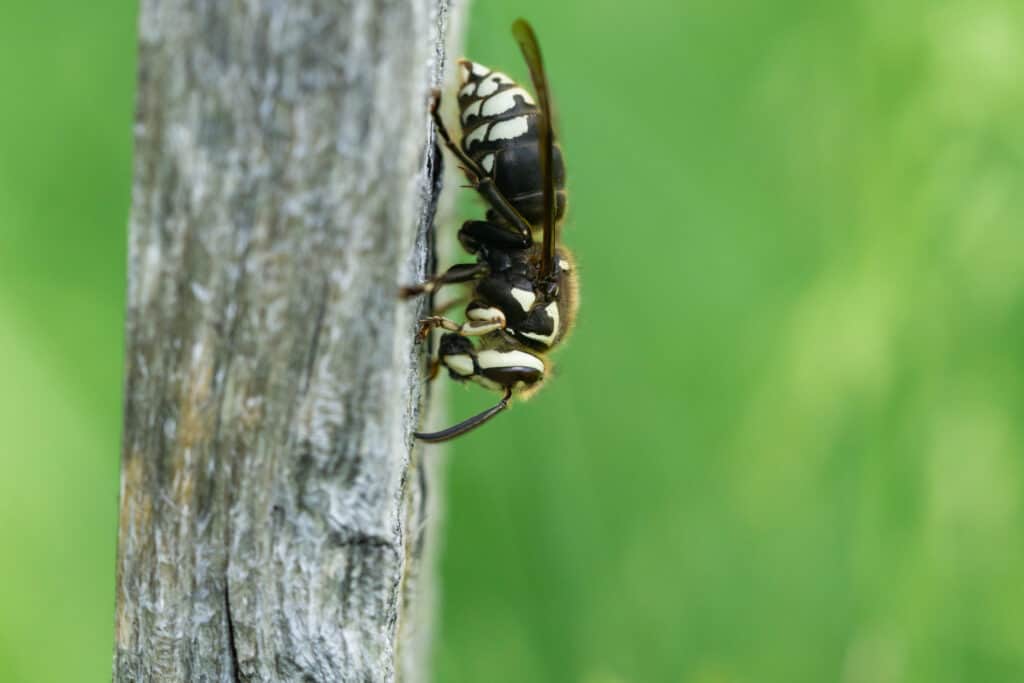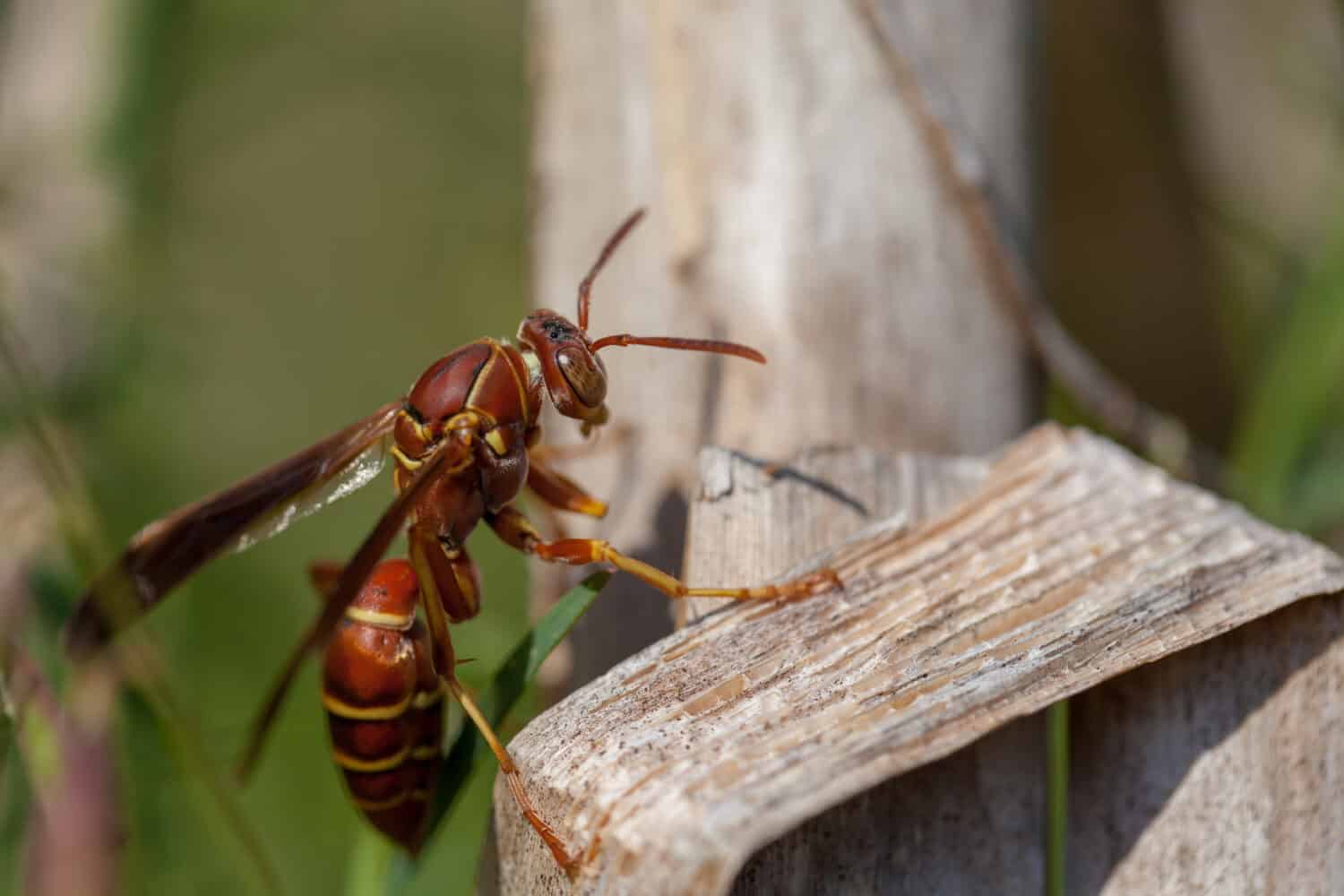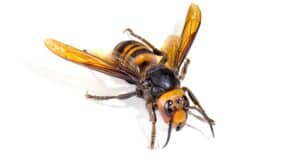The sound of their buzzing can send chills down your spine, especially if you’ve been stung before. These aren’t experiences you soon forget! Discover the types of wasps in Minnesota (ranked by the pain of their sting!).
Schmidt Sting Pain Index
The Schmidt Sting Pain Index was developed by Justin Schmidt, an entomologist who made quite a lot of sacrifices to develop the pain scale. He developed an original paper in 1983 to compare the different properties of each type of venom. Within the paper, Schmidt incorporated a table that rated the pain of each sting. The very first rating started at 0, which pointed to a harmless sting. Pain level 2 is the type of sting most are familiar with if they’ve ever been stung by a wasp or a bee. The pain level scale goes up to 4, which covers the most painful sting you could experience.
Along with the ratings, Schmidt also provided a thorough description of each experience. For example, in pain level 1 are fire ants, which Schmidt described as, “Sharp, sudden, and mildly alarming.” For pain level 1.5, he described the paper wasp’s sting as, “Burning, throbbing, and lonely. A single drop of superheated frying oil landed on your arm.” At pain level 4 is the tarantula hawk wasp, which he described as, “Blinding, fierce, shockingly electric. A running hair dryer has just been dropped into your bubble bath.” Interesting, right? Now let’s get into the types of wasps in Minnesota ranked by how much pain their stings cause.
Types of Wasps in Minnesota Ranked By Pain of Sting
Yellowjacket
Schmidt Sting Pain Level: 2
Scientific name: Vespula vulgaris
Yellowjackets are wasps that love feasting on nectar and honeydew. They are distinguished by their bright yellow and black bands. They’re not so much hairy like other flying insects, but rather glossy. These wasps aren’t the type to turn the other cheek if you happen to be in their vicinity and threaten their sense of safety. They’re quite aggressive and their aggression is best directed toward the insects they devour.

Yellowjackets are wasps found in Minnesota which can be dangerous to people allergic to their stings.
©Ernie Cooper/Shutterstock.com
These wasps are found throughout the world and can be extremely dangerous to those who are allergic to their stings. Without prompt medical attention, death is possible. When these wasps sting, it’s unmistakable. The worst part is they can sting more than once when they’re moved toward aggression (and they call their buddies in for backup too). The area of the sting swells, it gets itchy, and the soreness persists for days.
Bald-Faced Hornet
Schmidt Sting Pain Level: 2
Scientific name: Dolichovespula maculate
Although the name might initially be deceiving, bald-faced hornets are a type of wasp. These are black and white, and their heads are white, which makes them appear as if they were bald, hence their name. It’s a larger wasp with adults reaching 3/4 of an inch in length. Although the workers are sizable, the queen is always bigger. Their nests have the shape of an egg and appear papery.

Bald-faced hornets aren’t true hornets. They’re wasps.
©iStock.com/ErikAgar
Bald-faced hornets can certainly be beneficial, going after spiders and flies. They are incredibly aggressive when in defense mode, however. Even if you’re just out and about, frolicking and enjoying the day, an accidental disruption of a bald-faced hornet’s nest can lead to some serious consequences. They sting, yes, but they can also squirt their venom. The sting area throbs as if you’d just jammed it in a door.
Paper Wasp
Schmidt Sting Pain Level: 1.5
Scientific name: Polistes dominula
The appearance of paper wasps varies but generally, they have tones of brown and orange. They may also display black and yellow colors, which causes many to mistake them for yellowjackets. These wasps are more merciful than the other two on this list because they give you a fair warning that you’re too close by flying into you without using their stingers. However, when they decide to sting, you feel it. The pain is described as spilling acid on a paper cut. It’s a burning sensation.

Paper wasp stings are low on the pain scale but could be fatal.
©pixelworlds/Shutterstock.com
When they do decide to sting, paper wasps can do so repeatedly. Not only do they leave you in pain, but there’s also visible swelling. For those who have allergic reactions to stings, the reactions could be severe enough to be fatal. It’s best to seek medical attention right away if you suspect an allergic reaction to any kind of wasp sting.
How to Get Rid of Wasps Around the Home
If wasps have set up a nest in a high-traffic area, only attempt to treat it when the wasps are less active (either late evening or early morning). Wear long sleeves and pants if you’re attempting this on your own. If there are too many for you to handle, it’s best to let the pros come by and take care of it. If the nest isn’t in a high-traffic area, it’s best to let it be.
What Other Stinging Insects Are In Minnesota?

There are quite a few stinging and biting insects in Minnesota besides wasps.
©Protasov AN/Shutterstock.com
Minnesota is home to many types of stinging insects, including bees, hornets, and yellow jackets. All three of these pests can be found in Minnesota during the warm summer months.
Bees are some of the most common stinging insects in Minnesota. There are several different varieties that may be present throughout the state, such as honeybees, bumblebees, carpenter bees, and mason bees. They will typically nest in walls or other protected areas, such as hollow trees.
Minnesota is also home to head lice, pubic lice, and bed bugs. All of which love to bite humans and spread from host to host.
And then, of course, we have fleas, ticks, and mites to contend with. Not to mention spiders and cockroaches. Finally, Minnesota has black flies and horseflies that will occasionally bite people.
The photo featured at the top of this post is © Pavel Krasensky/Shutterstock.com
Thank you for reading! Have some feedback for us? Contact the AZ Animals editorial team.







